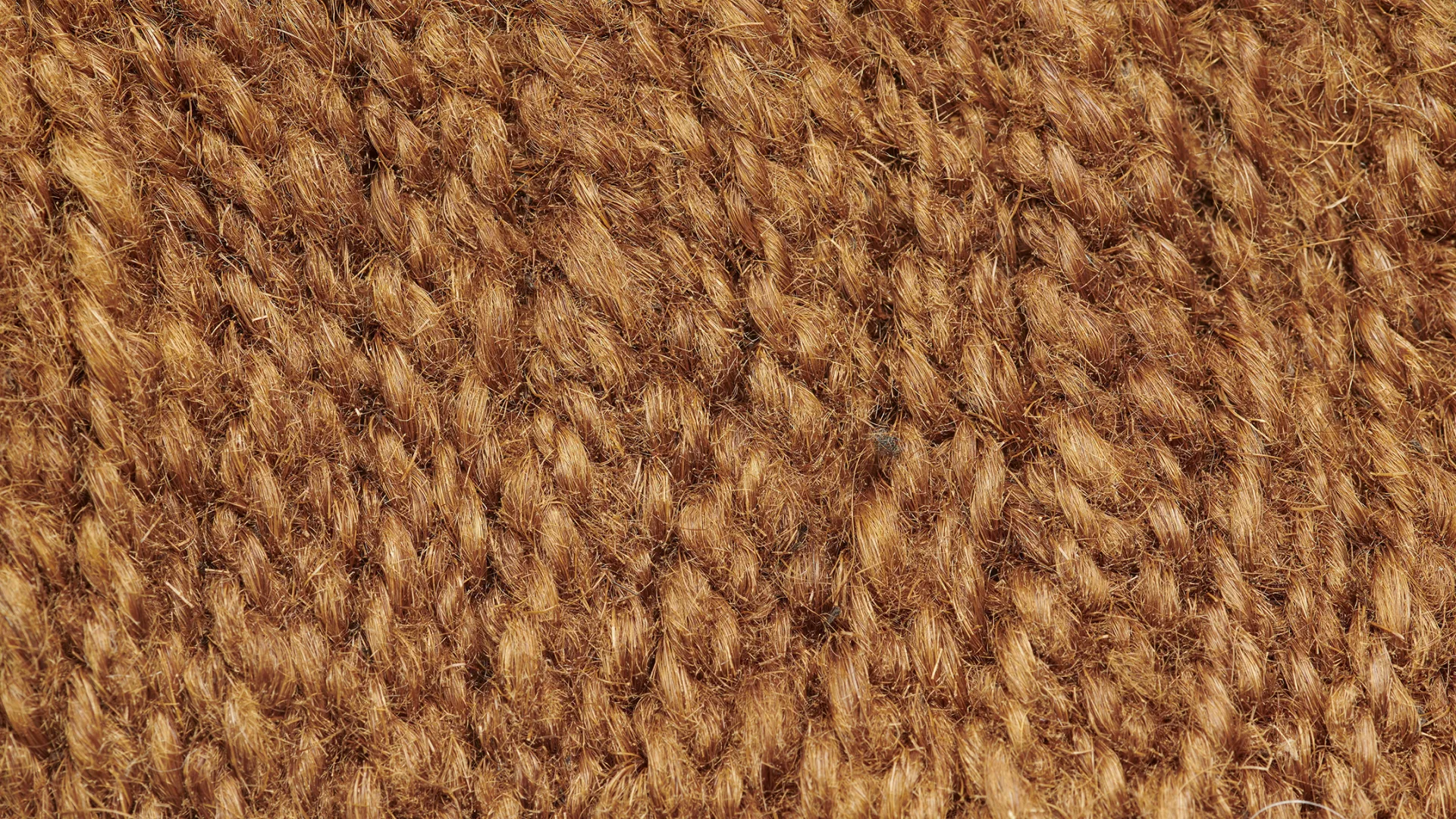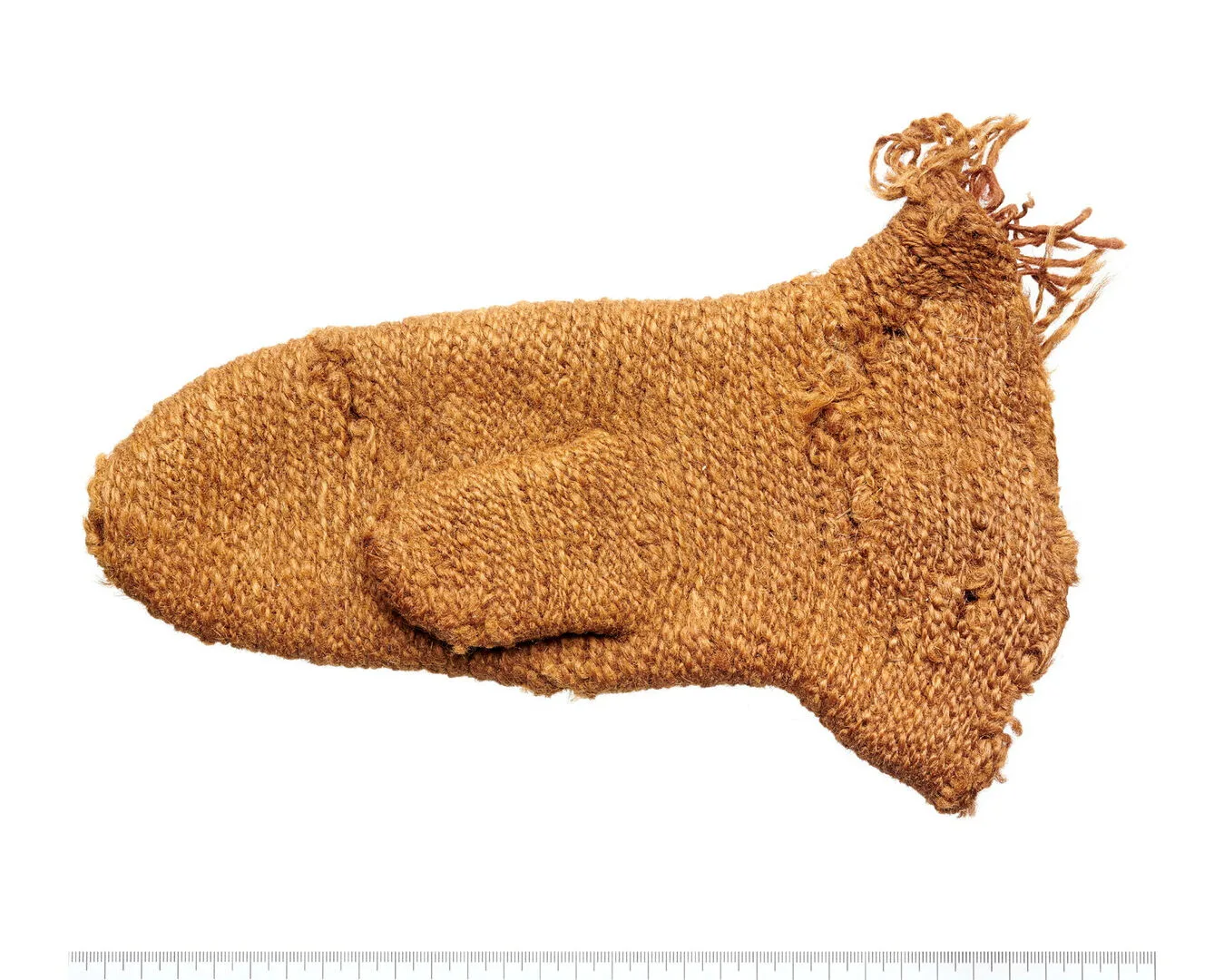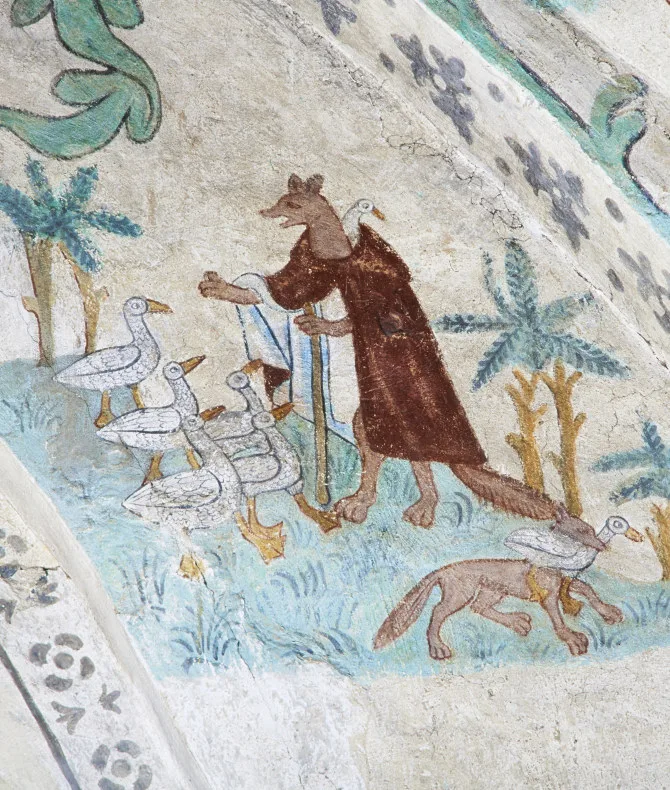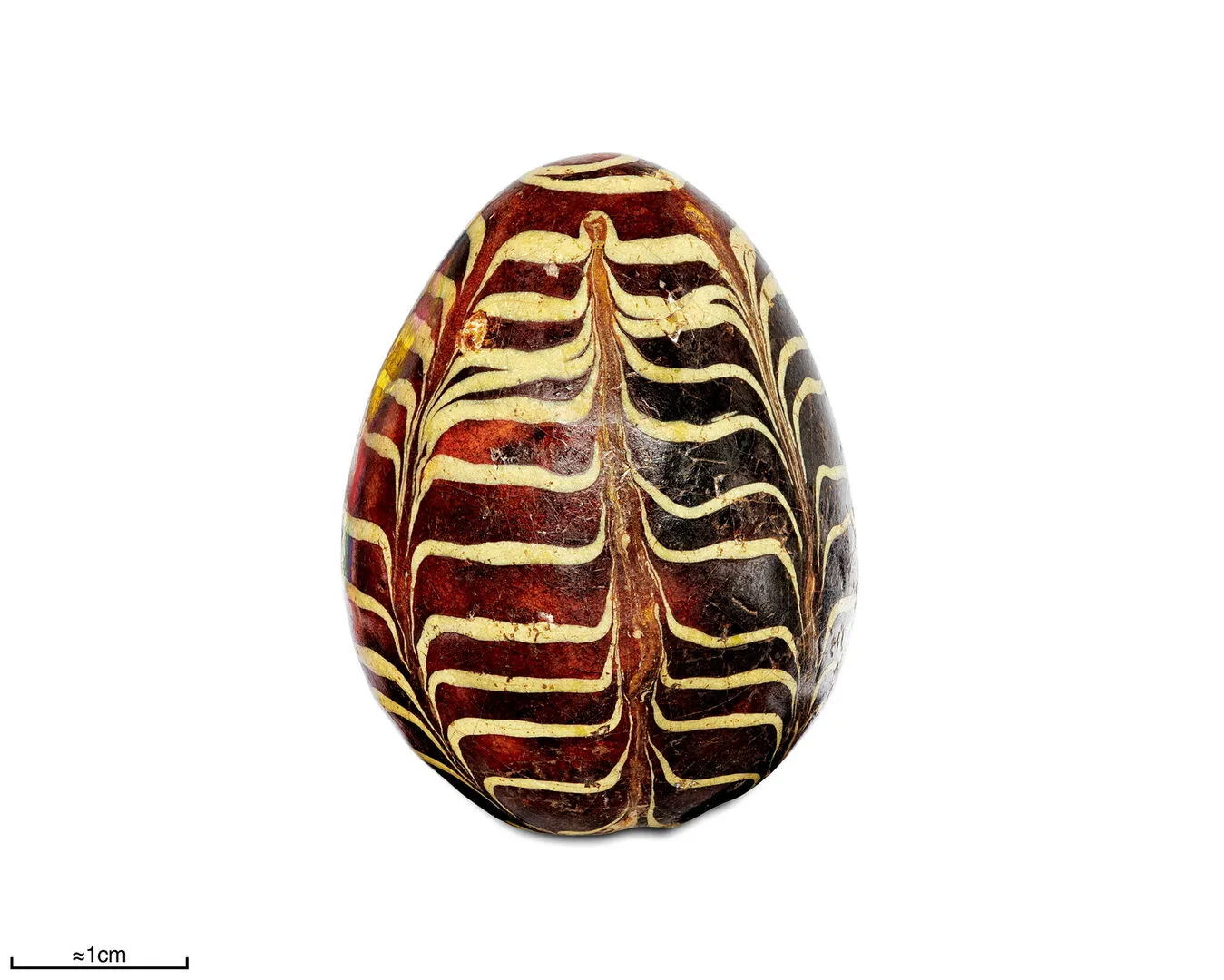The Åsle mitten and needle binding
Viking Age
AD 800 – AD 1100
Middle Ages
AD 1050 – AD 1520
Modern Age
AD 1520 – AD 2025

The needle bound mitten from Åsle parish in Västergötland was discovered in 1918 by Frithiof Svensson while he was cutting peat in Åsle bog. The mitten came to wider attention during a textile survey in the then Skaraborg County in the early 1930s. Svensson understood the value of textiles. He was first offered SEK 50 in compensation but negotiated the sum up to SEK 300. With the money, he bought a cow for his farm.
Undyed wool yarn
Needle binding is a precursor to knitting and crochet. The technique has been used in the Nordic region from at least the Bronze Age and continues to be practised today.
Needle binding requires only a slightly larger needle and yarn, usually wool. The method involves placing the yarn in loops around one’s thumb, then binding these with the aid of the needle and the working yarn, which runs together with the loops around the thumb.
The Åsle mitten is for the left hand, about 27 centimetres long, and made of wool yarn that was probably undyed at first, but which has since acquired a brownish colour from lying in the bog. Around the edge of the mitten are remains of a fringe that was once striped in red, green, and white wool yarn. Today it appears brownish, but colour differences can still be discerned.

The Åsle mitten
On view at Historiska museet in the exhibition Sveriges historia
Pollen analysis of the mitten
When the mitten was first examined, archaeologists studied it with the help of pollen analysis, a method that reveals what the natural environment looked like in a certain place at a certain time, by identifying which types of pollen are preserved in soil or clay.
The pollen analysis showed traces dating to the first centuries after Christ. Archaeologists therefore believed the mitten had been made at that time. This interpretation also seemed to fit with an earlier find in the same bog of a fire-striker dating from the 3rd–4th century.
New results with radiocarbon dating
is a method used by researchers to determine the age of objects, by measuring how much of a particular type of carbon (carbon-14) remains in ancient material that was once alive.
In the book Att datera textilier (“Dating Textiles”, Nockert and Possnert, 2002), the results of radiocarbon dating carried out in the 1990s on several textile objects, including the Åsle mitten, were published. These results show that the mitten was made sometime between 1510 and 1640, in the late Middle Ages. Nockert and Possnert argue that this significantly alters the historical interpretation. The mitten had previously been cited as evidence that the needle binding technique was already in use in the Viking Age in the Nordic region. But this can no longer be claimed with certainty.
A replica of the Åsle mitten can be seen at the Falbygden Museum in Falköping.







